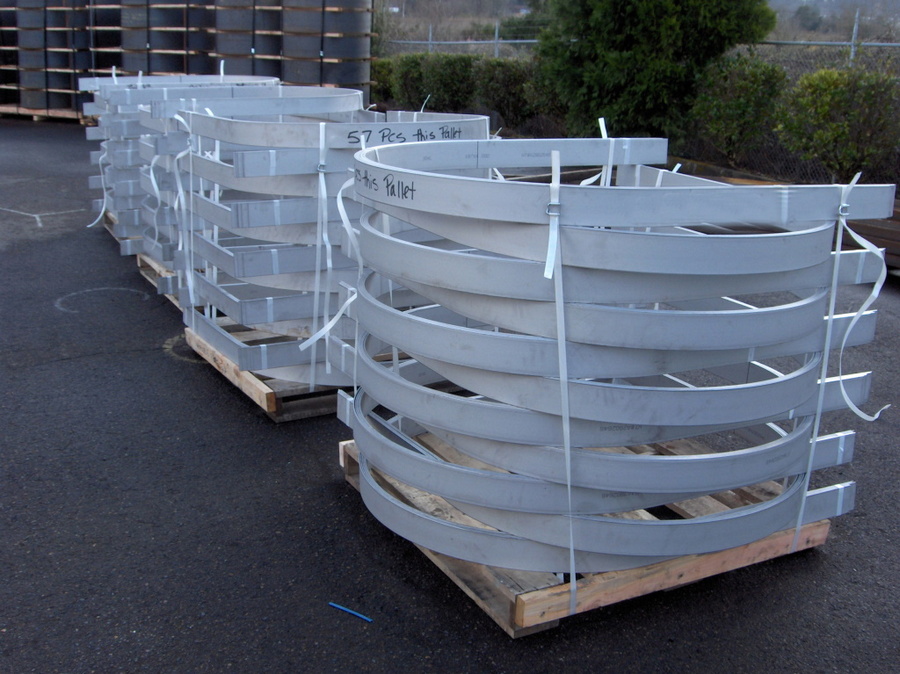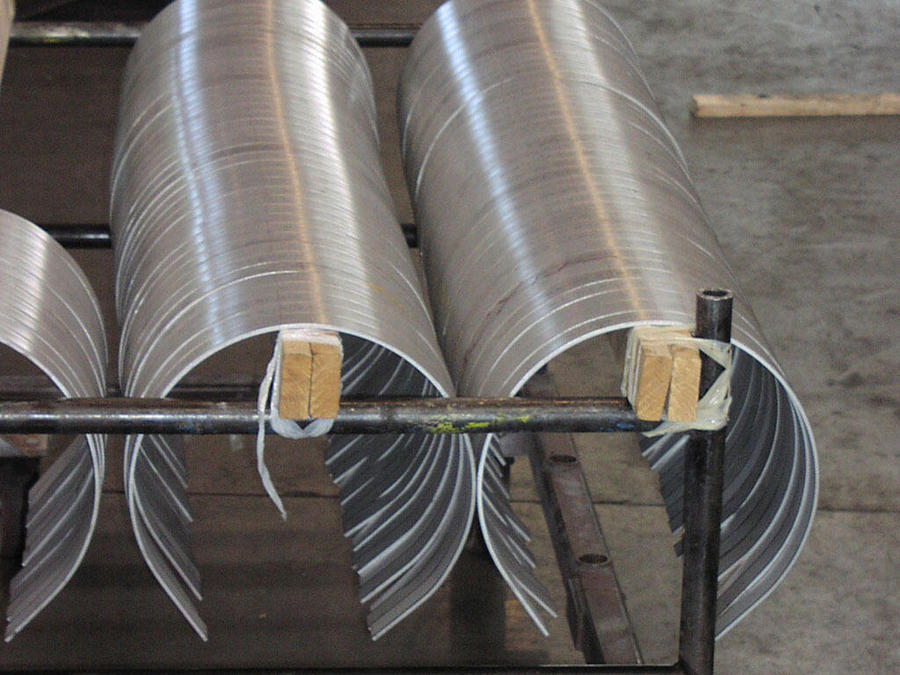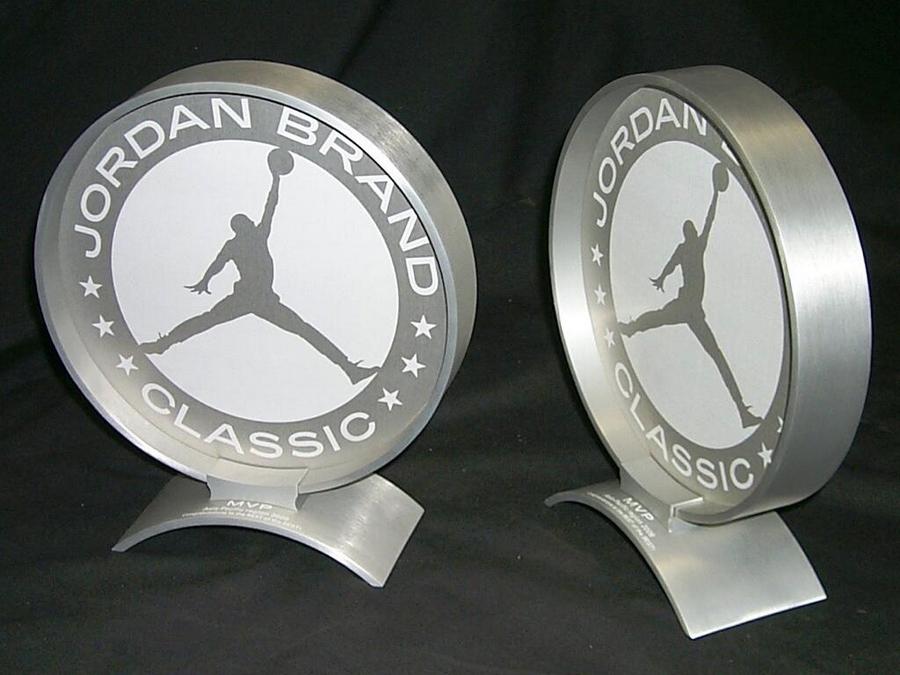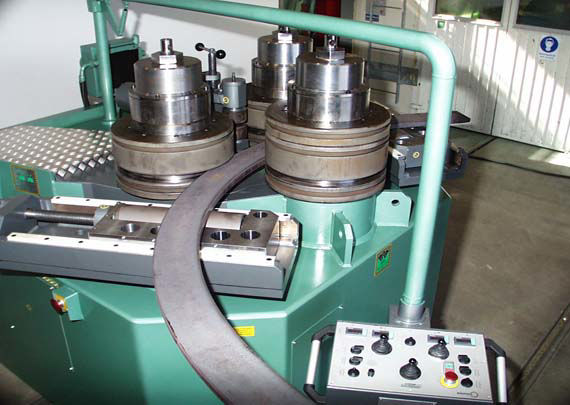
Bar
Bar materials can come in various shapes and sizes. Albina has the ability to bend round bar, square bar and flat bar. All of these shapes are solid.
Bars are specified in different ways or formats depending on the type of material. Round bar is called out with a size and description. For example 1” solid round means the material OD is 1” in diameter and the material is solid round. Square bar is called out similarly to round bar. For example 1” solid square means the material measures 1” x 1”. Flat bar is specified a little differently defining a thickness and a linear dimension. For example a common flat bar size is defined as FB ½” x 4”. The FB designates that the material is "flat bar", the ½" designates the material thickness in inches and the 4” designates the size / width of the material (also in inches).
Like round tubing and pipe, bars can be bent with virtually every bending process we have available in our shop. For very tight radius bending we utilize a draw bending process where we pull the material (draw the material) around a bend die matching the desired bend radius. For larger or sweeping radii we utilize a roll bending process or plate roll.
We can bend all types of bar including aluminum, stainless and carbon steel.
Bars are formed by either a cold drawn process or a hot drawn process. The different processes result in different material properties which are defined by local mills that are producing bars. Hot rolled bars are typically designated as A36 with a yield point (PSI) of 36,000 minimum. Cold rolled bars are typically designated as 1018 with a yield point (PSI) of 54,000 minimum.
Hot and cold rolled round bar is typically stocked in 20 or 24 foot lengths. Hot rolled square bar is typically stocked in 20 foot lengths where cold rolled square bar is typically stock in 12 to 20 foot random lengths. Hot rolled flat bar is typically stocked in 20 foot lengths while cold rolled flat bar is typically stocked in 10 to 12 foot random lengths.
Square and round bars can only be bent as one style (i.e. there is no strong axis or weak axis to bend against). We have the ability to bend all mill produces sizes of square and round bars. Flat bar can be bent both the easy way (against the weak axis) and the hard way (against the strong axis). We have the ability to bend flat bar the hard way for any thickness and size thru FB 2½” x 16” (that is 2½” thick material!). We have the ability to bend flat bar the easy way for any thickness and size thru FB 4” x 22”.
Bars are most commonly used for smaller manufactured parts and for industrial applications.
SHOW ME MORE WORK EXAMPLES!
ARCHITECTURAL INSTALLS, SPIRAL STAIRCASES & OEM PARTS
Capacities Chart
| Section | 3D Image | 2D Image | Photo | Capacities |
|---|
| Flat Bar the Hard Way |  |
 |
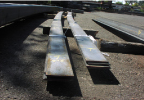 |
Any thickness and size through 2½" x 16" (section is dependent on thickness to width) |
| Plate/Flat Bar the Easy Way | 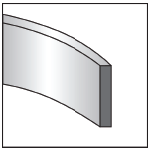 |
 |
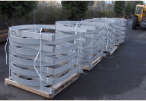 |
*Plate: 2-1/2" plate up to 10'0" in width *Flat Bar the Easy Way: Any thickness and size thru 4" x 22" *section is dependent on thickness to width |
| Square Bar |  |
 |
 |
All Mill Produced Sizes |
| Round Bar |  |
 |
 |
All Mill Produced Sizes |

